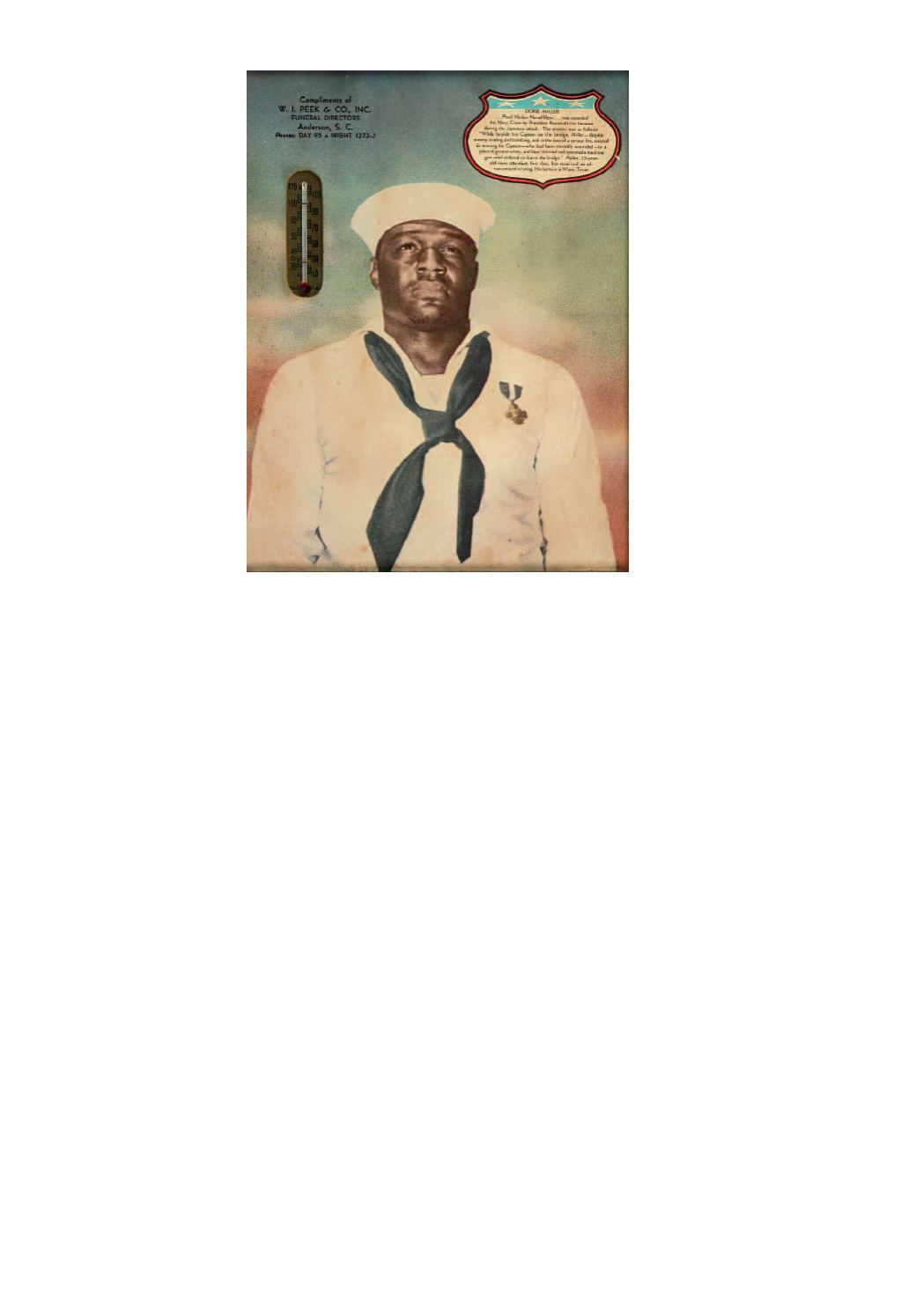

379
●
(MILITARY—WORLD WAR TWO.)
Dorie Miller, Pearl Harbor Naval
Hero.
Portrait memento from an African-American Funeral Home, 7 x 9 inches with a
small thermometer mounted to the left of Miller’s head in the original frame.
Anderson, SC: W.I. Peek & Co. Funeral Directors, 1942
[600/900]
A SCARCE UPLIFT MEMENTO FROM AN AFRICAN AMERICAN FUNERAL HOME IN SOUTH CAR
-
OLINA
.
A brief account of Miller’s brave acts at Pearl Harbor appears in a cartouche in the upper right
corner. The account states that Miller, a mess hall attendant, was awarded the Navy Cross and
advancement in rank by President Roosevelt. He was moved to another ship, and several months later
was lost when that ship was torpedoed.
380
●
(MILITARY—WORLD WAR TWO.) TUSKEGEE AIRMEN.
An extraordi-
narily rich archive of three Tuskegee Airmen: First Lieutenant Eugene W.
Williams, First Lieutenant Leroi S. Williams, and Second Lieutenant James T.
Williams; plus material related to the Williams family
Over 300 items: photographs,
official documents, letters and ephemera.
SHOULD BE SEEN
.
Vp, 1943-1949
[5,000/7,500]
THE FINEST TUSKEGEE RELATED ARCHIVE WE HAVE EVER HANDLED
A wonderful time capsule
consisting of over 300 items relating to Tuskegee Airmen Lieutenants Leroi S. Williams, Eugene W.
Williams and Second Lieutenant James T. Williams and their time as Tuskegee Airmen from 1943
to 1949. Second Lieutenant James T. Williams was not involved as a pilot but organized entertain-
ment for the base. One of his productions at Tuskegee titled “Roger” included some big names from
the music world; among them Jimmie Lunceford, and Coleman Hawkins.) There are quite a number
of excellent photographs of the planes and their pilots, a few candid ones taken by fellow pilots.
Standing out among the photographs is a striking studio portrait of Leroi Williams in his pilot’s
fleece-lined flight jacket, taken at the noted Prentice Hall Polk Studio, Tuskegee’s official photogra-
pher. Sadly, Lieutenant Leroi Williams died in a crash here in the states. Included is a presidential
certificate, a great many photographs of the pilots with their planes, flying squads, and together with
other Airmen. In addition to the photographs, there is a substantial quantity of official Tuskegee and
Army Air Force pamphlets and manuals, pilots’ log books, along with related official base publications
and communications. Among the latter is a rare copy of “The Hawks Cry,” the Tuskegee Airfield
379









